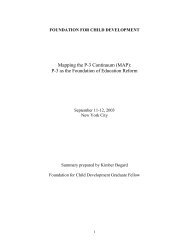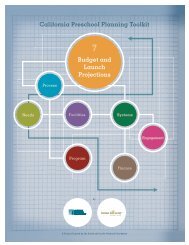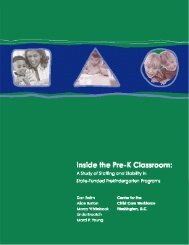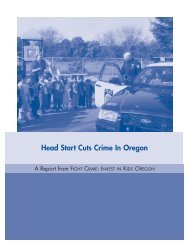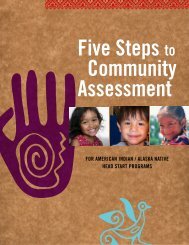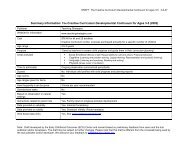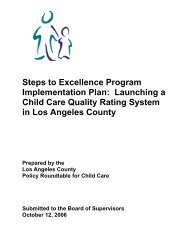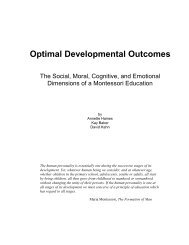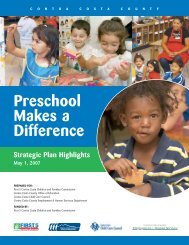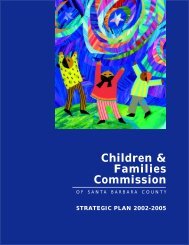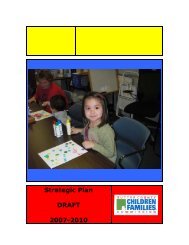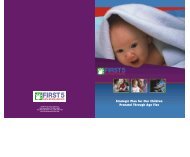Download this file - Plan4Preschool
Download this file - Plan4Preschool
Download this file - Plan4Preschool
You also want an ePaper? Increase the reach of your titles
YUMPU automatically turns print PDFs into web optimized ePapers that Google loves.
Special Education <br />
California provided special education services to 683,178 individuals, newborn through<br />
twenty-two years of age, in 2005-06. California provides specially designed instruction,<br />
at no cost to the parent, to meet the unique needs of each child with a disability. This<br />
instruction is provided in a variety of settings that allow infants and their families,<br />
preschoolers, students, and young adults to be educated with their peers as much as<br />
possible; that is, in the least restrictive environment (LRE). Special education services<br />
are available in a variety of settings that might include day care settings, preschool, a<br />
regular classroom, a classroom that emphasizes specially designed instruction, the<br />
community, and the work environment. The California Department of Education (CDE)<br />
works with colleges and universities to deliver staff development and training to ensure<br />
that teachers and other service providers are qualified to work with children with<br />
disabilities.<br />
The CDE provides state leadership and policy direction for school district programs and<br />
services for students who have a disability. This leadership includes providing families<br />
with information on the education of a child with a disability. The CDE works<br />
cooperatively with other state agencies in providing family-centered services for infants<br />
and preschool children and planned steps for transition from high school to employment<br />
and quality adult life. These efforts are supported by evaluation of student outcomes<br />
and analysis of current research. The CDE responds to consumer complaints and<br />
administers the federal Individuals with Disabilities Education Act and the No Child Left<br />
Behind Act for students with disabilities in California.<br />
The 13 disability categories and enrollment breakdown in California for individuals,<br />
newborns through twenty-two years of age, receiving special education services are<br />
(1) Mental Retardation, 44,263; (2) Speech or Language Impairment, 176,265;<br />
(3) Visual Impairment, 4,798; (4) Emotional Disturbance, 27,912; (5) Orthopedic<br />
Impairment, 15,321; (6) Other Health Impairment, 35,650; (7) Specific Learning<br />
Disability, 328,381; (8) Deafness, 4,462; (9) Hard of Hearing, 7,608; (10) Deaf-<br />
Blindness, 266; (11) Multiple Disabilities, 5,926; (12) Autism, 29,370; and<br />
(13) Traumatic Brain Injury, 1,747.<br />
Advisory Commission on Special Education<br />
An Advisory Commission on Special Education (ACSE) is mandated by both state and<br />
federal laws. The ACSE is required to study, assist, and provide recommendations at<br />
least annually to the Governor, the Legislature, the State Board of Education, and the<br />
State Superintendent of Public Instruction on issues related to the education and unmet<br />
needs of individuals with disabilities. There are 15 public members of ACSE, who are<br />
appointed as follows: three by the Speaker of the Assembly; three by the Senate<br />
Committee on Rules; four by the Governor; and five by the State Board of Education. In<br />
addition ACSE includes two members from the State Legislature, one from the<br />
Assembly and one from the Senate.<br />
88



